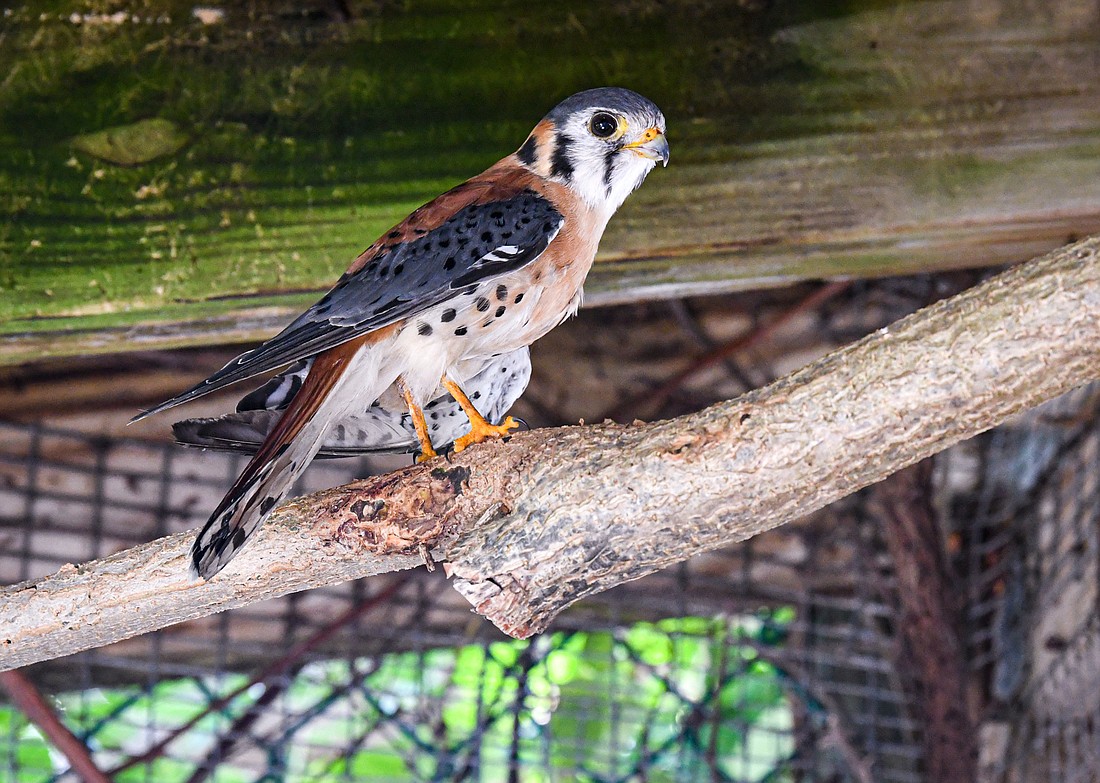- April 25, 2024
-
-
Loading

Loading

The smallest and most-common falcon in North America, American kestrels are the only kestrel species in the Western hemisphere. Two subspecies occur in Florida, the northern, which is migratory, and the southeastern, which is a year-round resident.
American kestrels hunt from a perch on a tree, or, in developed areas, from power lines and fence posts, diving to snag insects (especially grasshoppers), small mammals, small birds and reptiles. As they will often first hover above their prey, these diminutive raptors (the size of a blue jay), which are diurnal, are quite vulnerable to larger birds of prey, such as hawks and owls. As an adaptation, these colorful opportunistic hunters have two dark “eye-spots” on the backs of their head.
By appearing as if they are looking up at potential aerial predators, the false eyes dissuade would-be predators from attacking. And when stationary, these extra “eyes” also help deter attacks from songbirds, who habitually angrily mob would-be predators.
American kestrels are a state-designated threatened species because of an overall decline in nesting and foraging habitat in Florida.
Kestrels are partial to open woodlands, containing widely scattered trees, which have been progressively lost to development. And, as secondary cavity nesters, which don't make their own cavity but rather use existing natural cavities, or those previously excavated woodpeckers, removal of old-growth trees and snags has resulted in loss of appropriate nesting sites.
Kestrels are also threatened by pesticides, which deplete their insect-heavy prey base, and by collisions with motor vehicles.
To protect American kestrels, and our other native birds, we can avoid using pesticides, preserve snags and install nesting boxes in areas where natural cavities are sparse.
Save our Seabirds is a non-profit organization whose mission is to rescue and rehabilitate sick and injured birds, releasing as many as they can, while educating our community about avoiding injuries and preserving habitats.